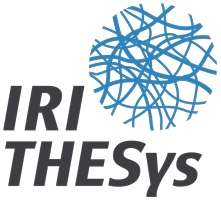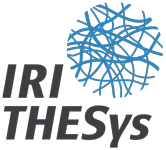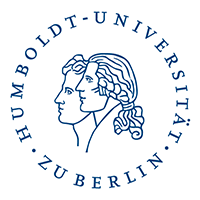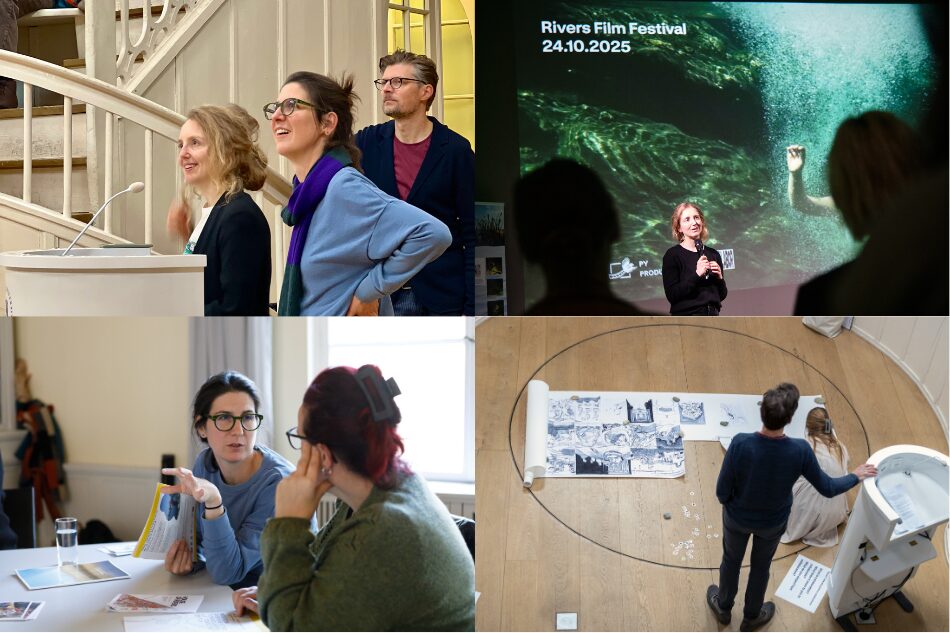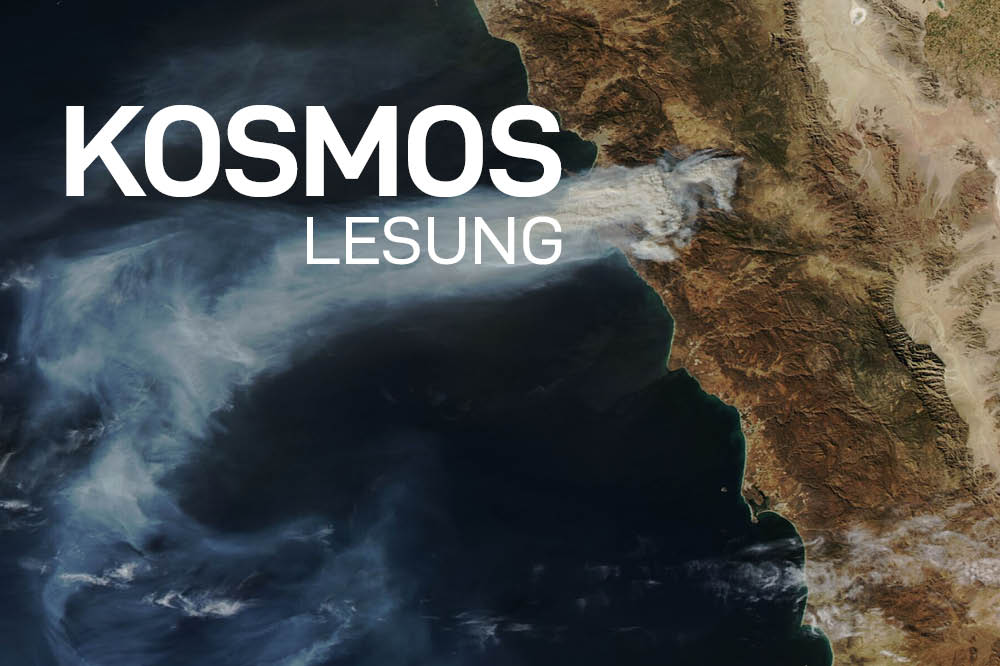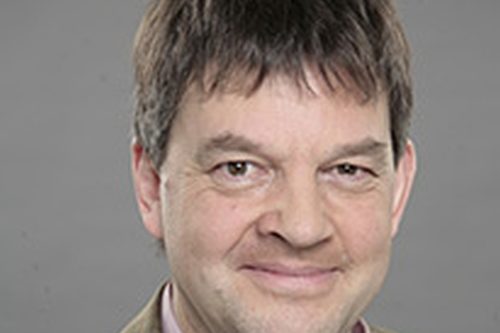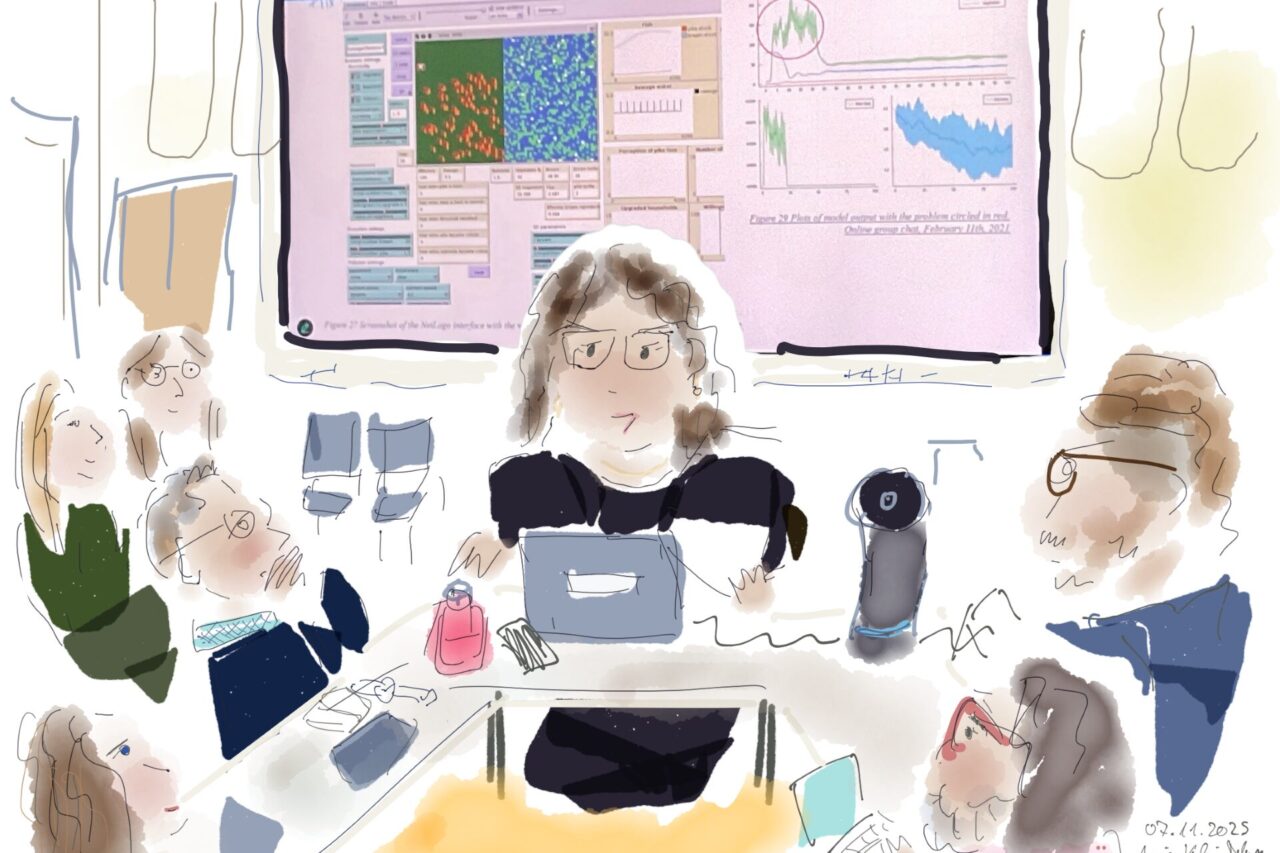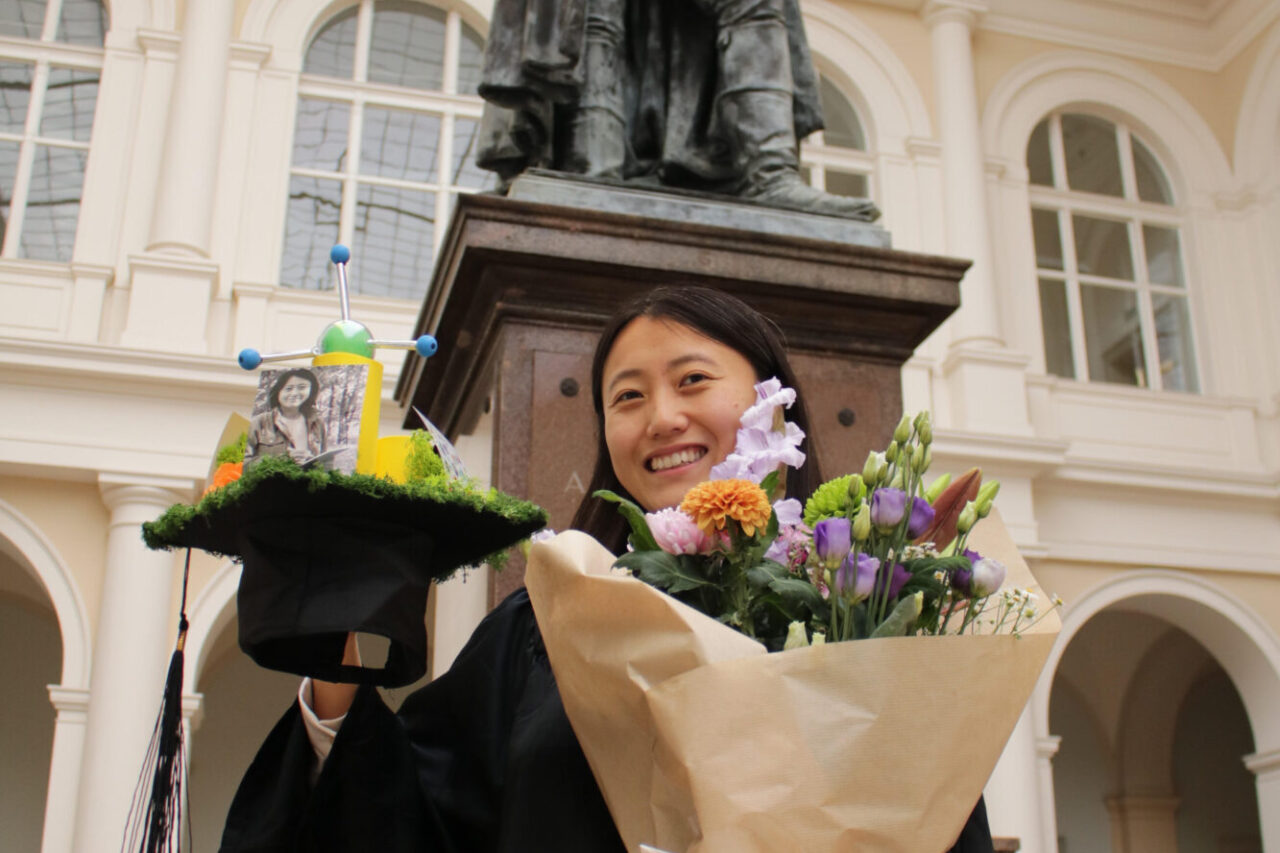Información en español abajo | Spanish below
The ‘Thinking with Rivers’ initiative, co-led by IRI THESys, contributed to socio-legal actions to defend four rivers in the Magdalena-Cauca Basin and finished in the summer of 2024
The defence of rivers is as plural as their geographies, waters, and communities in Colombia. From local civic actions to sentences to give rights to the rivers themselves, the ways in which riverine communities seek to protect their rivers are diverse and adapted to regional histories. They also respond to the impacts caused by multiple national and international actors in the water-energy-food nexus.
From June 2023 to July 2024, the ‘Thinking with Rivers for Environmental Peacebuilding‘ (in Spanish: “Pensar con los ríos la Paz ambiental”) initiative accompanied the co-creation of socio-legal strategies in the La Miel River in Caldas, the Sogamoso River in Santander, and the Cauca and Dormilón Rivers in Antioquia, the Colombian Andes. Multiple factors of environmental degradation impact these regions in parallel to the dynamics of the internal armed conflict that has affected this South American country since the beginning of the 20th century. Therefore, the transformation of these conflicts is intertwined with the peacebuilding desires of riverine collectives.
The ‘Water Security for Whom?‘ (W4W) project of IRI THESys co-led this initiative through the participation of doctoral researcher Laura Betancur Alarcón in collaboration with Professor Denisse Roca of the University of Antioquia, principal investigator of the initiative. ‘Thinking with Rivers for Environmental Peace‘ is co-funded by the Colombo-German Institute for Peace (CAPAZ) and executed in collaboration with four community collectives the Pontifical Bolivarian University, the Wageningen University (The Netherlands), the Claretiana University Foundation, the NGO Instituto Popular de Capacitación, and the Socio-legal Clinic of Public Interest of the University of Caldas.
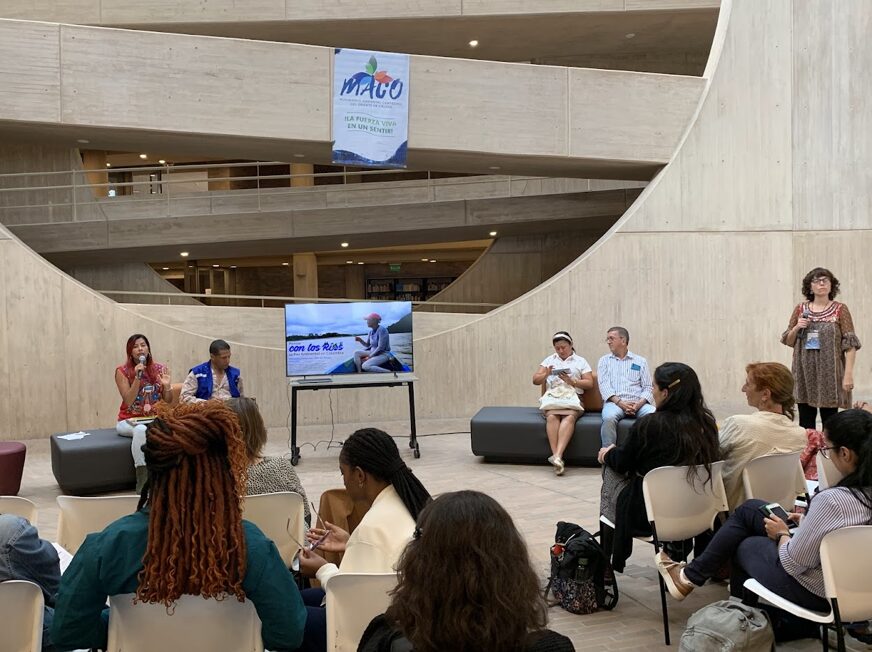
Photo 1: Roundtable with riverine leaders at the “Moving Rivers” international conference in Manizales. Credit: Johan Sebastian Silva G. (2024).

Photo 2: Final event of the ‘Thinking with Rivers’ initiative in Medellín. Leaders of the four rivers walked along the upstream areas of the Medellín River in an educational exercise to ‘thinking with rivers‘. Credit: Holmedo Pelaez (2024).
The project developed four knowledge exchanges, in the form of workshops, in each of the case studies, with the participation of about 50 people. Three macro-basin meetings were also held, where representatives of each river met at three different times in the cities of Medellín and Manizales. As part of the agenda, the initiative included public events in both cities, which gave visibility to the riverine voices.
Specifically, Laura Betancur (IRI THESys) led the case of the Sogamoso River in Santander, one of the W4W study sites, in collaboration with the collective “Mesa de Pesca del río Sogamoso” (Sogamoso River Fishing Council). This organization brings together nine associations of fishers and farmers of this river, which was dammed by the Hidrosogamoso Dam in 2014. Field activities were supported by the research assistant Miguel Suaza from Universidad de Antioquia.
As part of the initiative’s series of workshops, we first held the “Territorial Meeting in the Low Sogamoso River: Environmental Conflicts and Human Rights,” which took place February 9-11 in Barrancabermeja and Puerto Cayumba (Puerto Wilches), Santander. The two-day event partnered with the Regional Corporation for the Defense of Human Rights (Credhos).

Photo 3: Working session on the palm oil sector in Barrancabermeja.

Photo 4: Collective activity about possible sociolegal actions in Puerto Cayumba, Santander. Credit: Miguel Suaza.
In this meeting, we discussed the current risks of organized crime groups in the region with regional leaders. We also assessed the impact of oil palm extractors, which have transformed the water quality of the Sogamoso River’s tributary streams for decades. We conducted water journeys with inhabitants to understand the effects of spills and establish how this affects productive alternatives such as fish farming, one of the impact mitigation measures implemented by the dam.
During this first workshop, the relevance of seeking collective reparation, including direct environmental actions, was discussed, as opposed to simply economic compensation. Monetary payments have been the most common and short-term responses of the energy and oil companies in the region.
Photo 5: Cayumba water stream in Puerto Wilches, Santander. Credit: Miguel Suaza and Laura Betancur Alarcón.
After the first meeting in February 2024, we continue working through two actions: i) a series of trainings on socio-legal knowledge in alliance with the Public Interest Socio-legal Clinic of the University of Caldas, another partner of the ‘Thinking with Rivers‘ initiative; and ii) a final co-design workshop in June for the creation of a roadmap for socio-legal mobilization adjusted to the Mesa de Pesca del Río Sogamoso.
Jully Mora, leader of the Mesa de Pesca, mentioned during the socio-legal training sessions: “It is not about seeking group action or direct reparation, because that seeks to compensate, but not to solve the environmental conflict.” This phrase condenses the change in perspective that has been developing during this year of work within the Mesa de Pesca concerning socio-legal mobilization and environmental justice in the territory beyond negotiation with private companies.
It was key during this process that ‘Thinking with Rivers’ allowed the leaders of the Sogamoso River to learn about the experiences of other riverine collectives and observe what actions were successful in other rivers along the basin, which also experience pressure from hydroelectric plants and the agro-industrial and mining sectors.

Photo 6: Researchers, Mesa de Pesca del río Sogamoso members, and local NGO Credhos officers in the workshop in February 2024. Credit: ‘Thinking with Rivers‘ initiative.
The roadmap is one of the transdisciplinary knowledge outputs around the multiple water insecurities and territorial conflicts in the Low Sogamoso River. Through this action-research approach, Laura Betancur‘s doctoral research within the ‘Water Security for Whom?’ project strengthens the understanding of how multiple drivers of change juxtapose in dammed rivers and what tensions emerge from the water-food-energy nexus for river-based livelihoods. Likewise, this initiative balances the power relations between academic researchers and local organizations as they co-construct the research projects’ aims, methodologies, and outcomes.
Listen to this podcast episode, ‘Saberes para contar’, for more information about the Sogamoso River case and the Mesa de Pesca del río Sogamoso.
Información en español
Impulso a la defensa de los ríos en la cuenca más importante de Colombia
Iniciativa co-liderada por “Water Security for Whom?” contribuyó a acciones sociojurídicas para para defender cuatro ríos en la cuenca Magdalena-Cauca en Colombia
La defensa de los ríos es tan plural como sus geografías, aguas y comunidades en Colombia. Desde acciones cívicas en el nivel municipal hasta sentencias para darle derechos a los ríos mismos, las maneras en que las comunidades ribereñas buscan proteger sus ríos, son diversas y adaptadas a las historias regionales. También estas responden a los cambios e impactos que causan múltiples actores nacionales e internacionales en el nexo agua-energía-alimentos.
De junio 2023 a julio 2024, la iniciativa “Pensar con los ríos la Paz Ambiental” acompañó e impulsó la co-creación de estrategias socio-jurídicas para transformar los conflictos socio-ambientales en el río La Miel en Caldas, el río Sogamoso en Santander y los ríos Cauca y Dormilón en Antioquia, en Colombia. Estas regiones son impactadas por múltiples factores de degradación ambiental en paralelo a las dinámicas del conflicto armado interno que ha afectado a este país suramericano desde comienzos del siglo XX. Por eso, la transformación de estos conflictos está entrelazada con las acciones de construcción de paz.
El proyecto “Water Security for Whom?” co-lideró esta iniciativa a través de la participación de la investigadora doctoral Laura Betancur Alarcón y en colaboración con la profesora Denisse Roca de la Universidad de Antioquia. “Pensar con los ríos la paz ambiental” es co-financiado por el Instituto Colombo-Alemán para la Paz (CAPAZ) y ejecutado en colaboración cuatro colectivos comunitarios, la Universidad Pontificia Bolivariana, la Universidad de Wageningen (Países Bajos), la Fundación Universitaria Claretiana – UniClaretiana, el Instituto Popular de Capacitación y la Clínica Sociojurídica de Interés Público de la Universidad de Caldas.
El proyecto desarrolló cuatro intercambios de conocimientos, en formas de talleres, en cada uno de los casos de estudio con la participación de cerca de 50 personas en total. Además, llegó a cabo tres encuentros macro-cuenca, donde se reunieron representantes de cada río en tres momentos en las ciudades de Medellín y Manizales. En estas oportunidades, se complementó la agenda de trabajo con eventos abiertos al público de ambas ciudades, lo que dio visibilidad a las voces ribereñas.
Específicamente, desde IRI THESys, se lideró el caso del río Sogamoso en Santander, uno de los sitios de estudio de W4W, en colaboración con el colectivo “Mesa de Pesca del río Sogamoso”, una organización que reune a nueve asociaciones de pescadores y campesinos de este río embalsado por Hidrosogamoso Dam desde 2014.
Como parte de la serie de talleres de la iniciativa, primero llevamos a cabo el “Encuentro territorial en el Bajo Sogamoso: Conflictos Ambientales y Derechos Humanos”, que tuvo lugar del 9 al 11 de febrero en Barrancabermeja y Puerto Cayumba (Puerto Wilches), en Santander. El evento de dos días se hizo en lianza con la Corporación Regional para la Defensa de los Derechos Humanos (Credhos).
En este encuentro logramos intercambiar saberes con los líderes regionales respecto a los riesgos actuales con los grupos de crimen organizado en la región así como una evaluación del impacto de las extractoras de palma de aceite, que por décadas han transformado la calidad de agua de las fuentes tributarias al río Sogamoso. Además, hicimos recorridos con habitantes de la comunidad para entender las afectaciones de los vertimientos y establecer cómo esto afecta alternativas productivas como la piscicultura, una de las medidas de mitigación de impacto que ha puesto en marcha la represa.
Durante este primer taller, se discutió la búsqueda de acciones colectivas de reparación, que incluyan acciones directas de reparación ambiental y no simplemente compensaciones económicas, las cuales han sido las respuestas más comunes y de corto-plazo de las empresas del sector de energía y petróleos en la región.
Tras este encuentro en febrero, se continuó el acompañamiento a través de dos acciones: i) una serie de formaciones sobre conocimientos socio jurídicos en alianza con la Clínica Sociojurídica de Interés Público de la Universidad de Caldas, otro de los aliados de la iniciativa “Pensar con los ríos“; y ii) un taller final de co-diseño para la creación de una hoja de ruta de movilización socio jurídica ajustada a la Mesa de Pesca del río Sogamoso.
Jully Mora, la representante legal de la Mesa de Pesca, mencionó durante las sesiones de formación socio jurídica: “No es buscar acción de grupo ni reparación directa, porque eso busca indemnizar, pero no solucionar el conflicto ambiental”. Esta frase condensa el cambio en la perspectiva que se ha venido gestando durante este año de trabajo dentro de la Mesa de Pesca respecto a la movilización socio jurídica y la justicia ambiental en el territorio más allá de la negociación con empresas privadas.
Fue clave durante este proceso que la iniciativa académica permitió que líderes del río Sogamoso conocieran las experiencias de otros colectivos ribereños y observaran qué acciones dieron frutos en otros ríos a lo largo de la cuenca, sobre los cuales también hay presiones para construir hidroeléctricas o vertimientos por parte del sector agroindustrial y de minería.
La hoja de ruta es uno de los productos de coproducción de conocimiento respecto a las múltiples inseguridades hídricas y conflictos territoriales que ocurren en el bajo Sogamoso. Esta iniciativa de action-research del trabajo doctoral de Laura Betancur en “Water Security for Whom?” complementa y fortalece los esfuerzos de investigación para entender cómo se yuxtaponen múltiples factores de cambio en ríos con embalses y cuáles son las tensiones que emergen del nexo agua-alimentos-energía para los medios de vida ribereños.
Asimismo, este tipo de enfoque investigativo contribuye a balancear las relaciones de poder entre los investigadores académicos y las organizaciones locales, al ser ellas co-constructuras de los proyectos de investigación mismos y sus acciones y metodologías.
Author: Laura Betancur Alarcón
